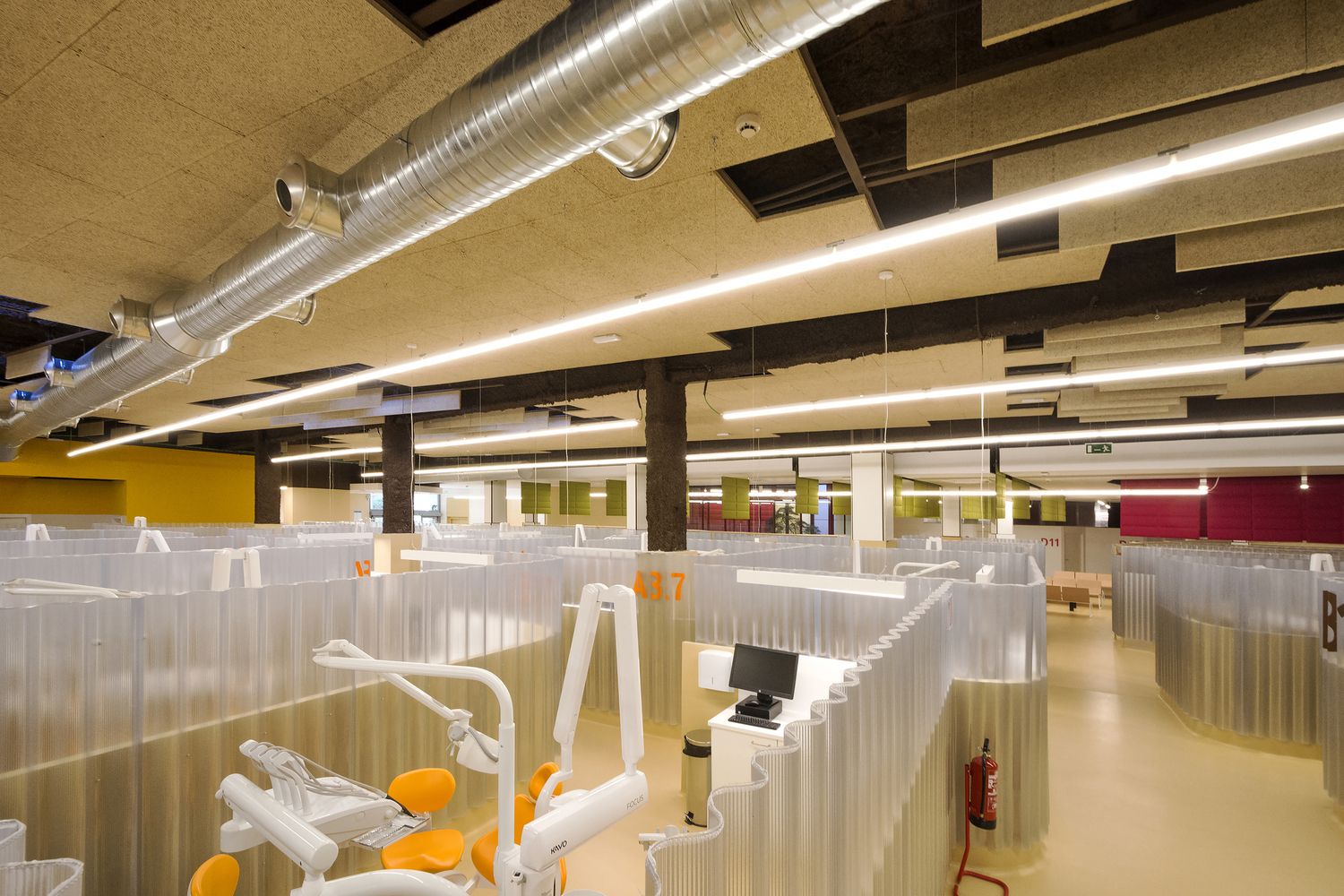The program confines four different CEU San Pablo University faculties necessities (odontology, physiotherapy, psychology, and nutrition) in a unique 2.780 m2 space arranged in two different levels, located on Almansa 66 Street on the Tetuán Madrid district. While on the first floor space is dedicated to conventional classrooms and student changing rooms, on the ground floor the protagonists are the odontology clinic’s curved boxes. This boxes are arranged in clusters of four allowing teachers to simultaneously tutor the treatment of four patients at the same time, allowing communication between student and teachers without compromising the privacy of the patients.
The teacher is able to supervise his students work with real patients through these curved shapes, creating an organic metaphor of 45 cabins. These dental cabin boxes are composed of 1.20m brick blocks and covered by epoxy resin and making the set a unique spatial joint. Corrugated cellular polycarbonate plates of 1.80m high are bolted to the breastplates, ensuring the privacy of the cabins, without closing the space. The benches covered in white corian are another technical layer housed in the shape of the breastplates. Lighting on the benches and lighting of each dental chair creates a functional order within the other primary order.
In contraposition to the organic forms of the odontology boxes, the cabinets of physiotherapy, nutritionist and psychologist take a polygonal shape, replacing the format of curved, resin-coated breastplates and polycarbonate screens, by steel profiles and the same polycarbonate panels. The large space serves as a metaphor for university work, where transversal communication and real learning takes place in an environment of transparency and professional information exchange. This programmatic needs supposed a challenge for acoustics premises. Wood chip acoustic panels have been used to improve sound absorption as well as sound-absorbing colored panels in the waiting room and physiotherapy cabins.
Clinic’s program and inner circulations are emphasizeby the unique arrangement of these panels. In the dental cabinets they are placed in a horizontal position, to avoid the installations on the ceiling and in the corridors in an upright position, seeking more dynamism and helping to read the space and its routes. Spatial clarity is achieved throughout the visual colors of the sound-absorbing. The functional concepts articulated in the plan and the distribution of the program also translates into the layout of the ceiling facilities and their visibility, as if they wereseparated anatomical elements.
The coloring and the signage seek the communication of space and its complex plot, both for the usual user (students and teachers) and occasional (patients and companions). At all times it escapes the typical aesthetic of a clinic, creating a warm and youthful atmosphere, thanks to the tones, shapes and chosen signage, all with a very small budget.
Source: ArchDaily
Pictures: Amores Pictures and Antonio Romeo Donlo for ArchDaily











Leave A Comment